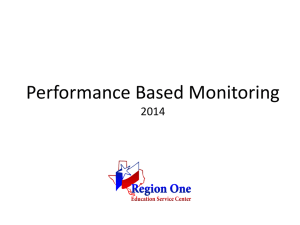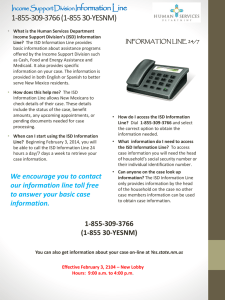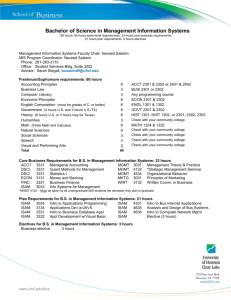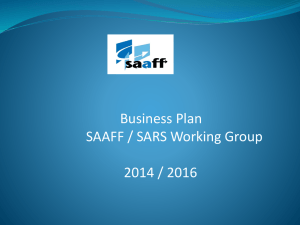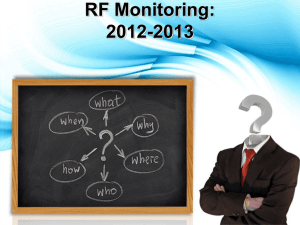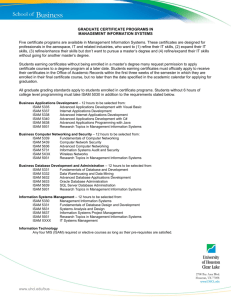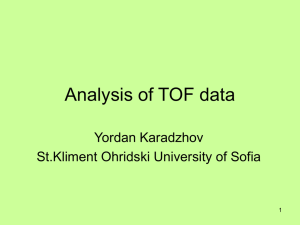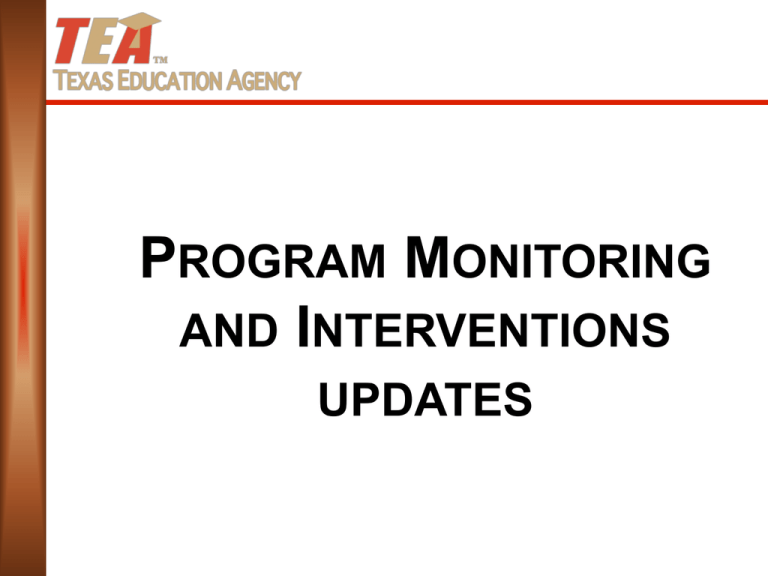
PROGRAM MONITORING
AND INTERVENTIONS
UPDATES
PBM Staging and
Interventions
• A To the Administrator Addressed
(TAA) letter was posted to the TEA
website on Monday, October 6.
• Staging for PBM interventions and
requirements went live in ISAM last
Friday, October 17.
• Each program area is staged separately.
• Cut points are determined for each individual
stage within a program area.
Let’s take a look at an example* on
the next slide…
* Information on next slide is for instructional purposes only and does not represent real data or cut points.
LEA
Mayberry ISD
Bedrock ISD
Whoville ISD
Rocketville ISD
Big City Charter
School
Bluesville ISD
Dillion ISD
# of PL 3s
# of PL 2s
Stage of
Intervention
12
9
4
3
3
3
5
2
9
0
4
4
3
3
3
2
1
5
8
2
2
Stage 4
9 individual PBMAS indicators with PLs of 3
to
12 individual PBMAS indicators with PLs of 3
Stage 3
3 individual PBMAS indicators with PLs of 3 and no
individual indicators with PLs of 2
to
4 individual PBMAS indicators with PLs of 3 and zero or
more individual indicators with PLs of 2
Submissions
• LEAs who are only staged at 1
and/or 2—retain all documents,
submitting only if requested.
• LEAs who have any program staged
at 3 or 4 (RF is 2,3,or 4) will submit
the targeted improvement plan on or
before November 21.
Questions
ISAM Updates
ISAM- Review Contacts
• Review contacts are displayed on
the right-hand side of the Review
Summary Page
• Review contacts information
(phone and e-mail) is displayed
once a person “clicks” on the link
Assigning Program
Contacts
At least one contact must be
assigned for each review before
submissions are accepted by the
system.
If no contact is assigned, an error
indicating that “no contact is
assigned” will appear on the page.
One program contact must be
identified before documents may be
submitted to the ISAM system.
ISAM- Submissions Page
• Required Submissions are marked with an orange asterisk
• Submission Status defaults to Pending until a submission is received
• Targeted Improvement Plan for PBM due 11/21/2014
Note: Ex of 1st Year Submissions, FIR and 2nd Year submissions vary
ISAM- Resources Page
• Resources are displayed based on level of intervention
• Resources can be downloaded all at once or individually
Note: Ex of 1st Year resources, FIR and 2nd Year resources vary
ISAM- Feedback/Follow-Ups Page
• Feedback/Follow-Ups for all submissions are new for 2014-2015
• There is a 1:1 Ratio between submissions to the feedback/follow-ups
• Status will default to “Not Started” until a support specialist enters data
• Click “View” to read all entered data
Note: Ex of 1st Year Feedback/Follow-Ups, FIR and 2nd Year Feedback/Follow-Ups
vary
Targeted Improvement Plan
Helpful Information and FAQ
Targeted Improvement Plan- Instructions Tab
• LEAs and Campuses must complete a separate Targeted Improvement Plan
• Formulas carry over from the Data Analysis tab to the Needs Assessment
Summary and IP
• Reconstitution tab is to be completed by campuses who are 2nd year
Improvement Required
• CAP tab must be completed by LEAs who have identified noncompliance
Targeted Improvement Plan- Instructions Tab
• Enter in all fields applicable
• Helpful tools/Reminders are available
• FAQ document will be available to assist LEAs/campuses
Targeted Improvement Plan- Data Analysis Tab
• Remember to complete the appropriate Data Analysis depending on
LEA/campus
• Please read the instructions, definition/purpose
• General Questions section is different depending on LEA/campus
Targeted Improvement Plan- Reminders/Help indicators
•
•
•
•
Red font indicates helpful information
Black font indicates Reminders
Select boxes allows more than one selection choice if applicable
Additional text boxes for explanations as needed
Targeted Improvement Plan- Problem Statements and Root
Causes
Targeted Improvement Plan- Needs Assessment and IP
Targeted IP is intended to address
specific areas of low performance
Prioritize root causes
Identify what focus areas will have
the greatest impact on the reasons
for low performance
Additional Resources
Helpful links are posted in the “Intervention Links” section on the Event Summary page.
See the step-by step guide in ISAM.
Links
For TEASE Access
http://www.tea.state.tx.us/index2.aspx?id=2728
For TEAL Access
https://pryor.tea.state.tx.us/TSP/TEASecurePortal/Access/LogonServlet
•
Questions/Feedback related to ISAM
isam@tea.state.tx.us
•
Questions/Feedback related to documents
pmidivision@tea.state.tx.us
•
Questions/Feedback related to TEASE/TEAL
computer.access@tea.state.tx.us
Important
Reminders
Data
Process
Reporting
State Accountability
• Districts
• Campuses
Performance-Based
Monitoring Analysis
System (PBMAS)
• Districts
Federal Requirements
(ESEA Waiver)
• Priority campuses
Data
Analysis
Needs
Assessme
nt
Implemen
t&
Monitor
Improvement
Plan
Targeted
Improvement Plan
with Quarterly
Progress Reports
Data Analysis Closer Look
PBM Questions
• Trends across programs
• Indicators with performance level (PL 2 or 3)
• Longitudinal reflection
• Campus contributions
Copyright © Texas Education Agency 2014.
All rights reserved.
30
www.taisresources.net
Content aligned to the TAIS Framework:
•
•
•
•
•
Expert videos
“From the Field” videos
Critical Success Factor (CSF) Planning Resources
Extended Learning Guides
Guided Practice
Copyright © Texas Education Agency 2014.
All rights reserved.
31
Questions?
Common on-site visit
findings
Copyright © Texas Education Agency 2014.
All rights reserved.
33
Program Model
No clear understanding of the
characteristics of the program model.
Inconsistent model implementation
from campus to campus.
Copyright © Texas Education Agency 2014.
All rights reserved.
34
LPAC
Inconsistent use of LPAC documents.
Missing academic strategies or
instructional interventions.
“Drive-by” LPACs
Copyright © Texas Education Agency 2014.
All rights reserved.
35
Staffing
Lack of sufficient staffing.
Lack of staff with sufficiently
specialized knowledge.
Copyright © Texas Education Agency 2014.
All rights reserved.
36
ELPS
Failure to treat ELPS as a required part of the
curriculum for ALL ELLS by classroom teachers,
especially at the high school level.
Personnel that have no ELPS training or
knowledge of how to incorporate ELPS into
daily curriculum.
Copyright © Texas Education Agency 2014.
All rights reserved.
37
Sheltered Instruction
Inconsistent implementation
Limited personnel to train and monitor
Lack of campus administrator knowledge
Superficial documentation of teaching
Lack of evidence in classroom environments
38
Additional Commonly Identified BE/ESL Needs
• Coordination and Collaborative
Planning
• Maintenance of Records
Looking
Ahead
What does an
effective
program look
like?
Characteristics of an
Effective BE/ESL Program
• Addresses needs of students
• Conducts annual program evaluation
• Employs quality instructional staff
• Supports collaboration
• Coordinates central administration with schools
Questions?


